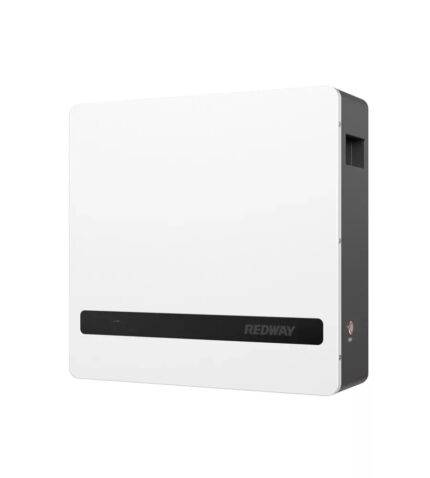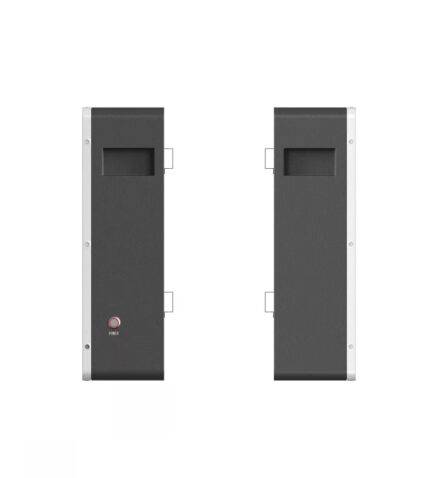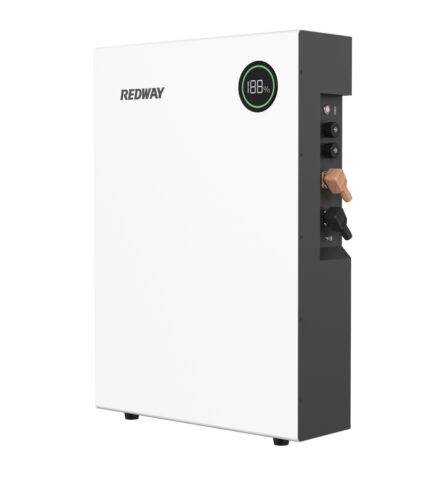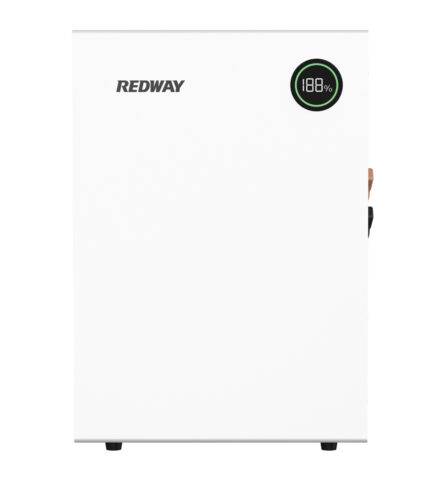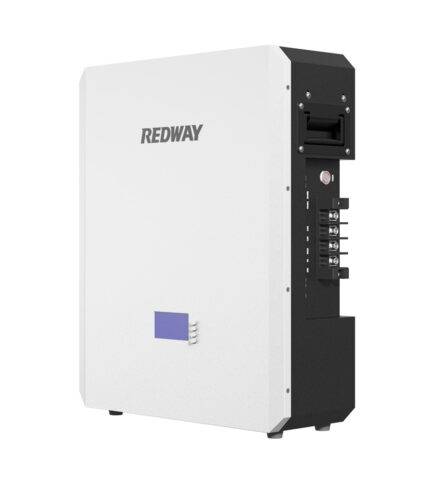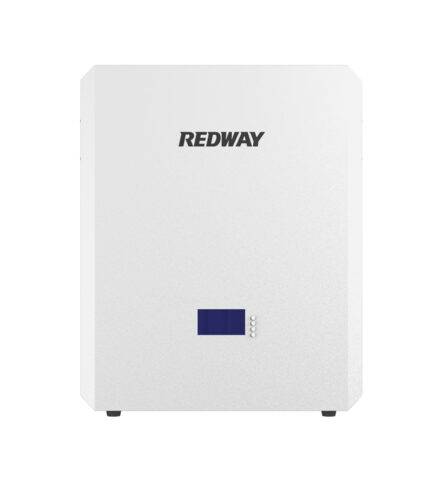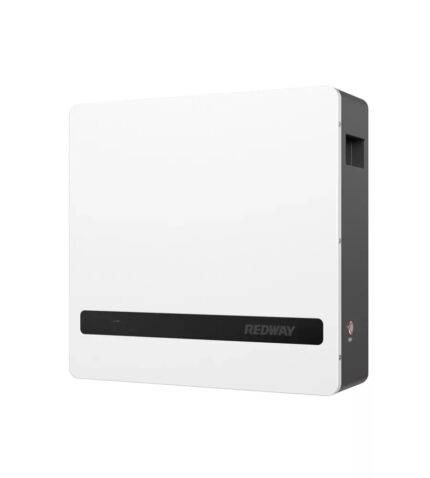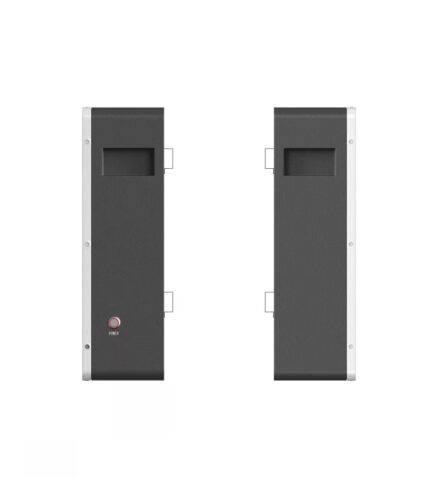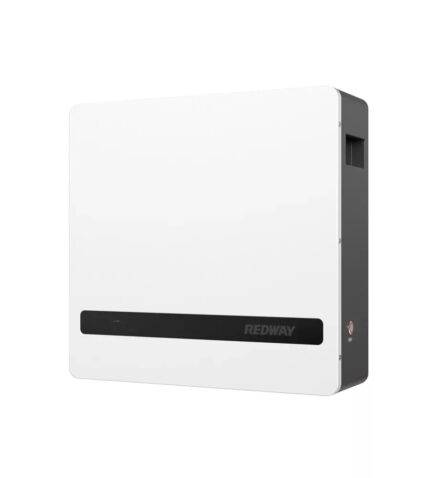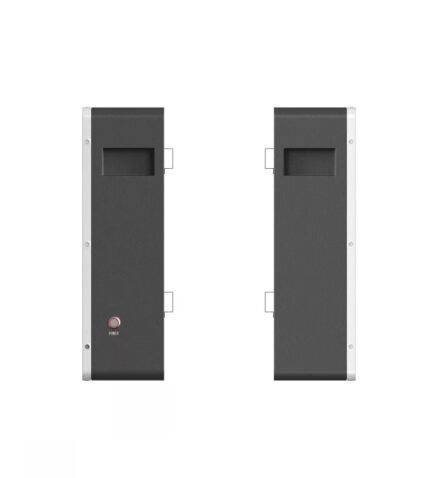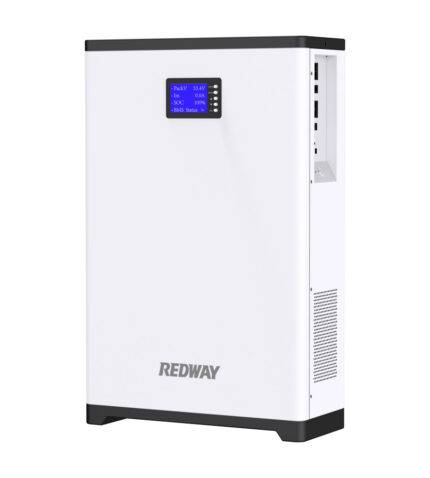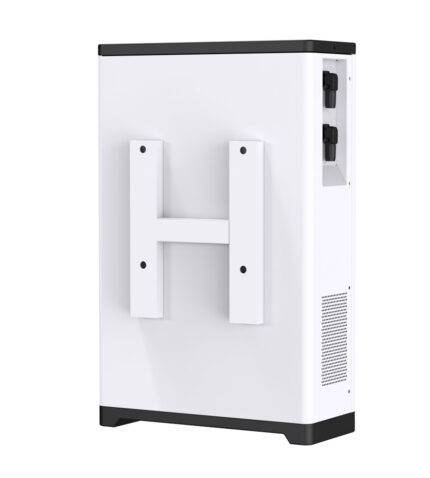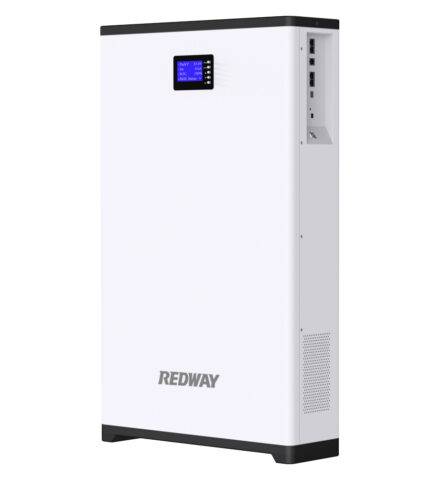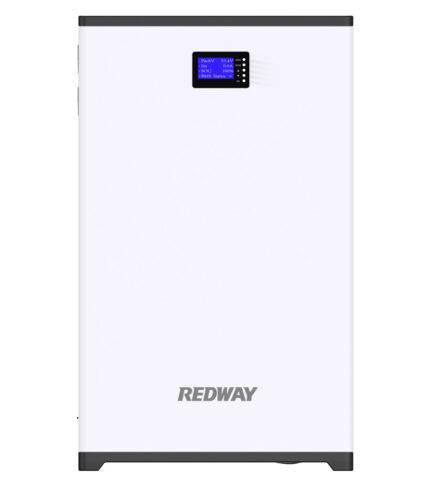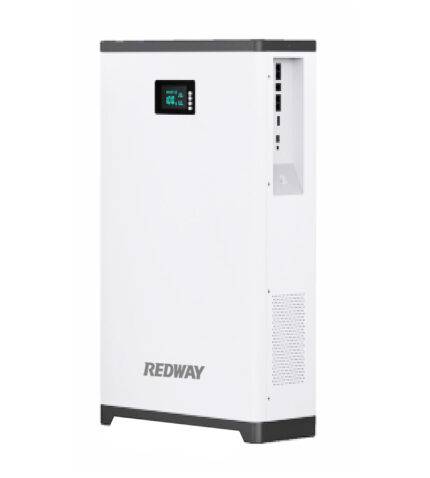
- Forklift Lithium Battery
- Lithium Golf Cart Battery
- Rack-mounted Lithium Battery
- 12V Lithium Battery
- 24V Lithium Battery
- 36V Lithium Battery
- 48V Lithium Battery
- 60V Lithium Battery
- 72V Lithium Battery
- 96V Lithium Battery
- 21700
- C&I ESS
- eBike Lithium Battery
- All-in-One Home ESS
- PowerWall HESS
- Car Starter Lithium Battery
- Portable Power Station
- Other
- Best Seller 2024
Redway Power is a global leader in the manufacturing of 51.2V 2.5kWh, 5kWh, 10kWh 15kWh LiFePO4 PowerWall Batteries, offering a one-stop solution for high-performance Home Energy Storage Systems (Home-ESS). Use JBD / DALY BMS Protection. Known for their exceptional energy density and compact design, Redway’s batteries are optimal for maximizing energy storage in limited spaces. For OEMs seeking reliable and efficient Power Storage Wall (PowerWall) Battery solutions, Redway Power stands out as an excellent choice, delivering both quality and innovation.
Showing all 9 results
PowerWall FAQs▾
What is a PowerWall Battery Storage system?
- Backup Power During Outages: The PowerWall Battery Storage system stores energy for backup protection, ensuring a reliable power source during grid outages.
- Energy Independence: By recharging with sunlight, the PowerWall system provides homeowners with energy independence and reduces reliance on the grid.
- Seamless Powering of Appliances: During outages, the PowerWall system seamlessly powers appliances, allowing homeowners to continue their daily activities without interruption.
How does a PowerWall system work?
- Energy Storage and Management: A PowerWall system consists of Powerwall batteries and a backup gateway, enabling you to store energy for later use and manage your energy consumption efficiently.
- Works with or Without Solar: The PowerWall system can be integrated with solar panels, allowing you to harness renewable energy. However, it also works independently, providing backup power and energy management even without solar panels.
- Intelligent Features and Updates: The backup gateway of the PowerWall system offers energy monitoring, metering, and intelligent controls. It can manage up to ten Powerwalls and receives over-the-air updates, ensuring optimal performance and efficiency.
What is the capacity of a typical PowerWall?
A typical Tesla Powerwall has a capacity of 13.5 kWh, of which 13.5 kWh are usable. It is designed to store electricity for solar self-consumption, time of use load shifting, and backup power. The Powerwall can partially or fully power a home during an outage and can be connected to the home’s existing electrical system. It is capable of running essential appliances like air conditioners and refrigerators for extended periods of time. The number of Powerwalls needed depends on the daily electricity consumption and the desired backup time. For off-grid living, a minimum storage capacity of 10 kWh is recommended.
However, Redway Power can made OEM on Powerwall products according to clients’ requirements.
How long can a PowerWall power a home during an outage?
- Backup Power Duration: With two Powerwalls installed, a PowerWall system can power a home for approximately 2.5 days during an outage, ensuring uninterrupted power supply for essential appliances.
- Essential Appliance Support: During this time, PowerWall can support appliances like fridges, lights, and charging devices, allowing homeowners to maintain their daily routines and stay connected.
- Individual Energy Consumption: The actual duration of backup power may vary based on the energy consumption of the home and the specific appliances being used.
- Reliable Backup Power: PowerWall provides a reliable and efficient solution for backup power, ensuring peace of mind and uninterrupted power supply during grid outages.
Can a PowerWall be used with renewable energy sources other than solar?
- Renewable Energy Compatibility: PowerWall can be used with renewable energy sources other than solar, such as wind turbines or other renewable sources. It offers the flexibility to store energy and power your home, reducing reliance on traditional energy sources.
- Charging Options: PowerWall can be charged from the grid or other renewable sources, allowing you to take advantage of off-peak electricity rates or excess energy generated by renewable sources.
- Energy Independence: By using PowerWall with renewable energy sources, you can reduce your dependence on the grid and have greater control over your energy consumption. PowerWall provides backup power during outages and empowers you to live more sustainably.
Is it necessary to have solar panels to use a PowerWall?
- No Solar Panels Required: PowerWall can be used without solar panels, as it can be charged using electricity from the grid. This makes it a versatile solution for homeowners who do not have solar panels installed.
- Backup Power and Cost Savings: Even without solar panels, PowerWall can provide backup power during outages and help reduce electricity costs by utilizing off-peak energy.
- Maximizing Energy Independence: Pairing PowerWall with solar panels allows homeowners to maximize their energy independence and reduce their reliance on the grid. This combination unlocks the full potential of PowerWall, enabling greater control over energy consumption and reducing environmental impact.
How do I install a PowerWall system?
- Certified Electrician: Installing a PowerWall system should be performed by a certified electrician to ensure proper installation and adherence to safety standards.
- System Components: The PowerWall system consists of Powerwall, a Tesla Gateway, and necessary electrical hardware such as a meter, main panel, and solar inverter.
- Flexible Installation: Powerwall can be mounted on the wall or floor, and both Powerwall and the gateway have multiple cable entry points, allowing for flexible installation options.
- Commissioning Process: Installers can use a smartphone, tablet, or laptop to commission the PowerWall system, configuring it for optimal performance and functionality.
What are the maintenance requirements for a PowerWall?
- Operating Temperature: PowerWall operates within a specified temperature range. It is important to keep the average ambient temperature within the optimum range for optimal performance and battery lifespan.
- Airflow and Debris: To maintain optimal airflow, it is essential to keep the PowerWall unit free and clear of debris, especially around the air intake and exhaust areas. This ensures efficient cooling and prevents any obstruction that may affect performance.
- Cleaning Guidelines: When cleaning PowerWall, use a soft, lint-free cloth. If necessary, lightly moisten the cloth with mild soap and water. Avoid using cleaning solvents or exposing PowerWall to flammable or harsh chemicals, as they can damage the system.
- Regular Maintenance: PowerWall and the gateway do not require pre-scheduled preventative maintenance. However, as an owner, it is important to conduct regular visual inspections to check for any physical damage, loose connections, or signs of wear. Stay informed about software updates and monitor the battery health and performance of the system.
Is a PowerWall environmentally friendly?
- Renewable Energy Storage: The PowerWall allows users to harness renewable energy sources like solar power and store the excess electricity for later use. By reducing reliance on fossil fuels, the PowerWall plays a crucial role in reducing greenhouse gas emissions and combating climate change.
- Efficient Energy Utilization: With its high energy density lithium nickel manganese cobalt oxide battery, the PowerWall maximizes the utilization of stored energy, reducing the need for grid electricity during peak demand periods. This efficient energy utilization helps lower carbon emissions and promotes sustainable energy practices.
- Battery Recycling and Zero Waste: Tesla’s commitment to sustainability is evident in its battery recycling efforts. The lithium-ion batteries used in the PowerWall are made from recycled materials, and Tesla works with partners to recycle spent cells, modules, and battery packs. This recycling process ensures zero waste and promotes the circular economy.
What is the cost of a PowerWall system?
Know more:
Overview of Powerall and Alti-ESS
What is the Powerall system and how does it function in energy storage applications?
The Powerall system is an advanced energy storage solution designed for residential use. It functions by storing excess energy generated from solar panels or the grid, allowing users to utilize this stored energy during peak demand times or power outages. Its modular design enables easy expansion and integration with existing systems for optimal energy management.
What advantages does the Alti-ESS provide compared to other energy storage solutions?
The Alti-ESS offers several advantages, including high energy density, longer lifespan, and enhanced efficiency compared to traditional battery systems. It features advanced battery management technology, supports flexible expansion, and provides reliable performance under varying environmental conditions, making it a superior choice for both residential and commercial energy storage needs.
Integration and Usability
How can Powerall be integrated into a home solar system for energy efficiency?
Powerall can be integrated into a home solar system by connecting it to solar panels and an inverter. This setup allows for the storage of excess solar energy generated during the day, which can then be used during peak hours or at night, enhancing overall energy efficiency and reducing reliance on grid power.
What are the key features of the Powerall series for residential use?
Key features of the Powerall series include modular design for easy expansion, high energy density for compact storage, advanced battery management systems for safety, and low self-consumption rates. Additionally, it offers fast charging capabilities and is compatible with various solar panel setups, making it ideal for residential applications.
How does the modular design of Powerall enhance its usability in various settings?
The modular design of Powerall enhances usability by allowing users to customize their energy storage capacity based on specific needs. This flexibility makes it easy to scale up as energy demands increase over time, ensuring that homeowners can adapt their systems without significant upgrades or replacements.
Safety Features
What safety features are included in the Alti-ESS for residential energy storage?
The Alti-ESS includes several safety features such as built-in Battery Management Systems (BMS) that protect against overcharging, overheating, and short circuits. It also has thermal protection mechanisms and robust construction to withstand environmental stresses, ensuring safe operation in residential settings.
Support for Off-Grid Living
How does Powerall support off-grid living and emergency power needs?
Powerall supports off-grid living by providing reliable energy storage that can be used independently of the grid. During power outages or emergencies, it supplies stored energy to essential appliances and systems, ensuring continuous power availability when it's most needed.
Performance Specifications
What are the performance specifications of the Alti-ESS compared to traditional battery systems?
The Alti-ESS typically offers superior performance specifications compared to traditional battery systems, including longer cycle life (up to 5,000 cycles), higher efficiency (over 95%), and faster charging capabilities. These features result in lower long-term costs and improved reliability for users.
Energy Management
How does Powerall manage energy distribution during peak usage times?
Powerall manages energy distribution during peak usage times by utilizing advanced algorithms that prioritize energy supply based on demand. It can automatically switch between stored solar energy and grid power to optimize usage patterns, ensuring that essential devices receive power without overloading the system.
Warranty and Lifecycle
What is the warranty and lifecycle expectation for the Powerall system?
The Powerall system typically comes with a warranty of up to 10 years on batteries and 5 years on inverters. Users can expect a lifecycle of approximately 5,000 charge cycles with proper maintenance, making it a durable investment for long-term energy storage solutions.

